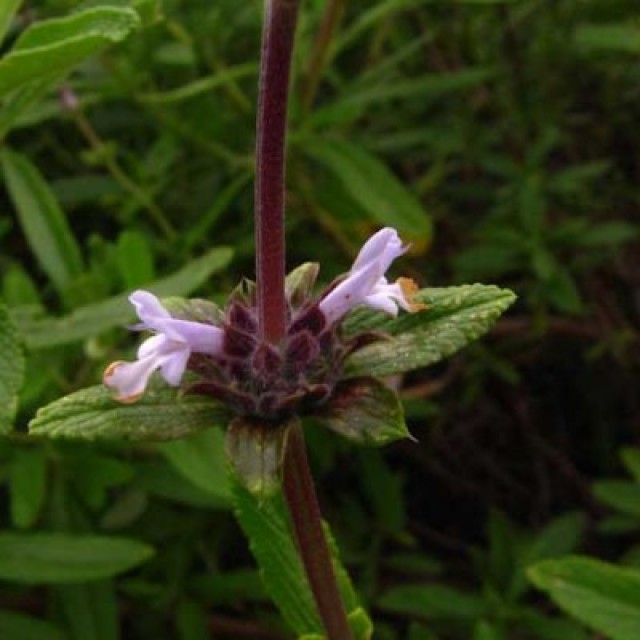COMMON NAME
Black sage
SCIENTIFIC NAME
Salvia mellifera
ALSO KNOWN AS
California black sage
Plant family
Mint (Lamiaceae)
Plant group
Broadleaf Evergreens
An aromatic evergreen shrub with distinctive textured leaves like the sage used for cooking. The flowers form in dense, globe-shaped clusters. The floral tube and its lobes are white to light blue to lavender, and occasionally rose-colored. The upper 'lip' of the tube has two petal lobes while the lower 'lip' has three small lobes.
92 reports
49+
OBSERVERS
92+
OBSERVATIONS
Identification hints
True sages are sweet-smelling herbs or shrubs with highly textured, oppositely arranged leaves, like the common sage used in cooking (S. offiicinalis). There are many species native to California. Black sage is distinctive in being a shrub (with woody stems), no spines at the tips of the leaves and with stamens that are not longer than the flowering tube, and white to light blue flowers. The closely related Salvia brandegeei has narrow (linear) leaves with margins rolled under the edges. Munz's' sage (Salvia munzii) has leaves pointed at both the base and tips like black sage, but has dark blue flowers, and leaves are usually widest at the tips. If you're hiking in chaparral or in open Oak woodlands you're likely to find S. leucophylla (Purple Sage) which has reddish to purple colored flowers, dull-toothed leaf margins and pale-green to whitish leaf surfaces and anthers which extend well beyond the end of the floral tube.
Did you know?
Black sage is very sensitive to environmental factors, such as air pollution (especially sulfur dioxide). Consequently, they're considered to serve well as a biological indicator of air pollution in southern California. In highly polluted regions, the plants grow poorly. Many kinds of animals rely on black Sage for food. For example, woodrats store the leaves to eat during the winter. Other small mammals and some bird species eat the tiny seeds. Because black sage has a bitter taste and strong odor, most wild mammals and livestock find the leaves and stems to be highly unpalatable.
DISTRIBUTION IN TH U.S.
California
HABITAT
Black sage is common throughout Central Western and Southwestern California, and extending south into northern Baja; it occupies coastal sage scrub, desert scrub, and chaparral communities below 3937 ft (1200 m).
ATTRIBUTES
Leaves
The leaves are about 0.8 to 3.15 in (2 to 8 cm) in length and are bumpy to the touch. The shape of the leaves vary from elliptical to oval-shaped. The top side of the leaf is more or less hairless, but the lower surface is hairy.
Flowers
The flowers are found in dense, globe-shaped clusters. The floral tube and its lobes are white to light blue to lavender, occasionally rose-colored. The upper “lip” of the tube is comprised of two petal lobes and the lower “lip” is comprised of three small lobes. The flowers are bisexual, which means they have both male and female reproductive organs. At the peak of flowering, the flower clusters will include closed buds, open fresh flowers, and drying flowers that are developing into fruits, all in close proximity to each other. Flower buds appear once spring days become consistently warm, typically by March. Open flowers can be seen throughout spring and into summer, generally March through June.
Fruits
The fruit is a tiny, hard, brown nutlet, 0.08 to 0.12 in (2 to 3 mm) in length and width. Fruits and seeds ripen throughout the summer.
See Menu
- 2021 Chicago Botanic Garden. All Rights Reserved.
-
Creative Commons
BY-NC-SA 4.0 - Terms of Use
- Privacy Policy
- Data Sharing and Citation Policies
- 2021 Chicago Botanic Garden. All Rights Reserved.



